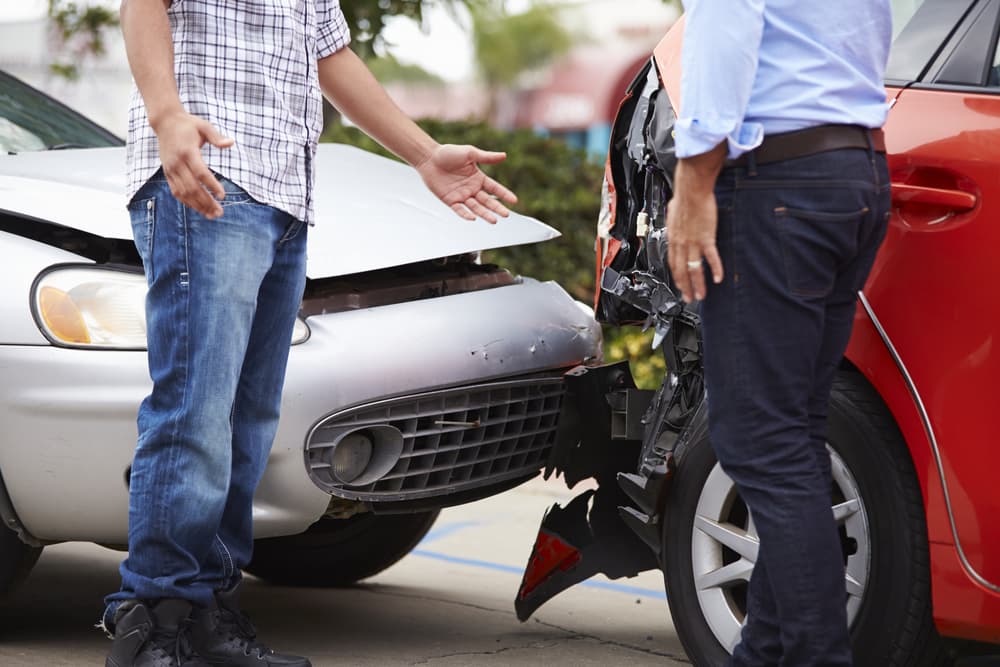In some motor vehicle crashes, especially those that involve three or more vehicles, you need a car accident lawyer to determine the exact circumstances surrounding the accident, not to mention who caused the accident. In addition to the at-fault driver, you may hold a motor vehicle owner fully or partially responsible for the accident under a negligent entrustment or vicarious liability theory of recovery.
You may hold a vehicle owner liable for negligent entrustment if they entrust their vehicle to a friend or other individual whom they know to have a bad driving record, such as a previous record of DUI convictions or moving violations.
Also, under vicarious liability law, you may hold a vehicle owner indirectly responsible for the negligent behaviour of an individual who operates their vehicle – and does so with their permission.
When a vehicle owner causes or contributes to a motor vehicle accident, the owner’s insurance coverage may be primary. However, if a driver does not have the owner’s permission to operate a particular vehicle, the negligent driver’s insurance coverage may provide the primary coverage, while the vehicle owner’s insurance policy may provide secondary coverage.
Navigating the issue of insurance coverage in a complex car accident case can be extremely difficult. Therefore, if you are in one of these accidents and suffer bodily injuries, consult a knowledgeable car accident lawyer in Edmonton as quickly as possible.
Your lawyer can promptly review the police report or retain an accident reconstructionist who can determine the likely cause of your accident and who is ultimately liable. Your lawyer may then file a personal injury claim with the appropriate insurance company on your behalf and begin pursuing the full monetary recovery you deserve for your car accident injuries and property damage.
Common Reasons Why Auto Accidents Occur

Motor vehicle accidents are usually a direct result of another driver’s negligence, and sometimes indirectly, from a car owner’s negligence in letting an irresponsible friend or relative drive.
Driver negligence can take various forms, but one common cause of motor vehicle accidents is a driver’s failure to follow standard road rules.
Some of the most common examples of traffic law violations that lead to traffic accidents include failing to use turn signals when making a turn or switching travel lanes, failing to yield the right-of-way to other vehicles at the proper times (such as at a four-way traffic intersection), and excessive speeding.
At other times, accidents may happen when drivers fail to use their side view and rearview mirrors or utilize the safety features on their vehicles, including lane-change warning devices and backup cameras.
Another all too common cause of car accidents is intoxicated driving, where an individual operates their vehicle while under the influence of alcohol or drugs.
Although the blood alcohol concentration (BAC) limits may vary from province to province, passenger vehicle operators are typically intoxicated if their BAC reaches at least 0.08 percent. Provinces throughout the country impose harsh penalties for DUI offenders because of the serious dangers they pose to other drivers and passengers.
In many cases, an intoxicated driver cannot drive carefully and safely. For example, an intoxicated driver may not focus their full time and attention on the road, or they may experience blurred vision, dizziness, delayed reflexes, delayed reaction time, lack of coordination, or impaired judgment.
As a result, intoxicated drivers may not see other vehicles and pedestrians clearly or stop their vehicles in time to avoid a collision.
Auto accidents may also occur when drivers exhibit road rage, such as aggressive horn honking, weaving in and out of multi-lane highway traffic without utilizing a turn signal, and tailgating other drivers aggressively. Whenever enraged drivers execute these careless driving maneuvers, they significantly heighten their chances of causing a motor vehicle crash.
Finally, some auto accidents directly result from distracted and inattentive driving. Given the many electronic devices and gadgets in people’s vehicles, including smartwatches, GPS navigation systems, and cell phones, it is fairly easy for a driver to become distracted while behind the wheel.
For example, a driver might be programming their GPS navigation system, making a call without using a hands-free Bluetooth device, roughhousing with vehicle passengers, or adjusting the volume on their car stereo system.
Unfortunately, however, these activities may cause a driver to look away from the road and prevent them from seeing an approaching vehicle.
When people drive negligently and irresponsibly, they may inadvertently cause several different types of accidents, including rear-end crashes, sideswipe collisions, rollover accidents, T-bone (or broadside) accidents, or head-on collisions with other vehicles.
All of these accidents can bring about serious, permanent injuries.
If you sustained injuries in a motor vehicle accident that resulted from a driver or car owner’s negligence, consult an experienced personal injury lawyer in your area as soon as possible.
Your lawyer can evaluate all your legal options and file a claim on your behalf with the proper insurance company. Your lawyer can then handle all settlement negotiations and work to recover the full monetary damages you need and deserve.
Injuries in Car Accidents
When individuals are involved in car accidents that result from driver or owner negligence, they may suffer extremely serious injuries depending upon the circumstances.
Since every accident case is different, not all accident victims will suffer the exact same injuries and damages. The injuries that an individual suffers in a car crash will usually depend upon their bodily movements in the vehicle at the time of the accident, along with the force of the collision and the number of impacts that occur.
Common car accident injuries include:
- Traumatic head and brain injuries
- Open lacerations
- Soft tissue neck and back injuries
- Internal bleeding
- Internal organ damage
- Eye injuries
- Mouth and teeth injuries
- Spinal cord damage
- Complete and incomplete paralysis injuries
- Broken bones
- Rib fractures
- Bruises
Upon sustaining any of these injuries in a motor vehicle accident, you should consult with a medical professional as quickly as possible about your medical treatment options.
For example, if you suffered a serious injury, such as a bone fracture, you might need to undergo surgery or other invasive medical procedures. Additionally, you may need to consult with a neurologist or other medical expert or follow up with a physical therapist.
When accident victims fail to seek ongoing medical care for their injuries, insurance companies and their adjusters frequently become skeptical.
In these circumstances, an adjuster might argue that the accident didn’t cause the victim’s injuries or that they are not severe enough to warrant sufficient monetary compensation.
However, if an accident victim receives continuous treatment for their injuries, they heighten their chances of recovering the fair monetary compensation they deserve for all their accident-related losses.
Satisfying the Legal Burden of Proof in a Car Accident Case
To recover monetary damages for car accident injuries, an accident victim must satisfy their legal burden of proof in a personal injury claim or lawsuit.
First, the accident victim has to establish that the other driver owed them a legal duty of care. Specifically, drivers have a duty to follow all traffic laws and to drive carefully and safely under the circumstances.
If the accident victim is alleging that the owner was fully or partially responsible for the accident, they will also need to establish that the owner owed them a legal duty of care.
An owner’s legal duty typically involves entrusting their vehicles only to safe and responsible drivers who have a good driving record.
Next, the accident victim has to show that the at-fault driver and/or the vehicle owner violated their legal duty of care in some manner. For example, a driver might have violated one or more traffic laws or operated their vehicle while under the influence of alcohol.
Similarly, a vehicle owner might have entrusted their vehicle to a known irresponsible driver with a record of moving violations or DUIs.
Additionally, the accident victim must demonstrate that as a direct result of the car driver or owner’s negligence, the subject accident happened. Finally, the accident victim has to demonstrate that because of the accident, they suffered at least one physical injury, which resulted in economic and/or non-economic (intangible) losses.
To establish the legal burden of proof in a car accident case, an accident victim’s lawyer may need to retain an accident reconstructionist, medical expert, or other expert to testify at a discovery deposition or during a civil jury trial.
For example, if the insurance company is disputing fault for the accident by alleging that their insured did not cause it, an accident reconstructionist may visit the accident scene, review property damage photographs, look at police reports, review video camera footage (if any is available), and make their own determination about the likely cause of the car crash.
Similarly, if disputes arise regarding medical causation, a treating healthcare provider may testify that the accident victim suffered a particular injury as a direct result of their car accident.
Medical experts may also show, based upon a reasonable degree of medical probability, that a particular injury that the accident victim suffered is permanent.
Recovering the Monetary Damages You Need for Your Injuries and Other Losses
When a car accident victim can fully satisfy their legal burden of proof, they can obtain various types of monetary compensation.
First, If the accident victim had to miss time from work, they may receive monetary compensation for their lost earnings.
Additionally, if their injuries prevent them from performing their prior job duties, and they have to switch jobs and accept a lower pay rate, they can receive compensation for their loss of earning capacity.
In addition to out-of-pocket losses from a car accident, an accident victim may pursue favourable monetary recovery for their non-economic damages.
These damages compensate accident victims for lifetime and long-term care costs, inconvenience, loss of spousal consortium and companionship, lost use of a body part (such as from a paralysis injury or spinal cord injury), emotional anguish and mental distress, lost quality of life, past and anticipated pain and suffering, and permanent disfigurement.
You cannot trust insurance companies to accurately calculate and compensate your losses. These companies try to save money by undervaluing losses, especially intangible losses like pain and suffering. Too many people accept settlements lower than they deserve because they did not have a lawyer’s guidance.
When you hire a lawyer from the start, they will provide you with an estimate for the likely value of your car accident case. They can then pursue the appropriate claim or lawsuit on your behalf, seeking the full monetary damages you need to recover for your injuries. They can advise whether each offer is fair or not.
Talk with an Auto Accident Lawyer Near You Today
Auto accidents that result from driver or owner negligence can produce debilitating injuries, which may leave you incapacitated for a long time. Additionally, your lost earnings can mount up quickly, and you may experience ongoing (and sometimes lifetime) pain, suffering, and inconvenience.
If you suffered injuries in a recent auto accident, consult a knowledgeable car accident lawyer in your area as quickly as possible. Accident victims must file a personal injury lawsuit within two years of their car accident date. Therefore, when pursuing and recovering monetary compensation for your injuries, time is of the essence.

A car accident lawyer can immediately enter an appearance on your behalf and begin investigating your accident circumstances. Your lawyer may also handle all settlement negotiations with insurance company adjusters and litigate your case to a prompt and efficient resolution in the court system.
Every step of the way, your Edmonton personal injury lawyer will ensure that you remain well-informed of your case status and fully aware of all potential legal options. That way, you can make intelligent decisions throughout your entire case, increasing your likelihood of recovering favourable monetary damages that make you whole again.
